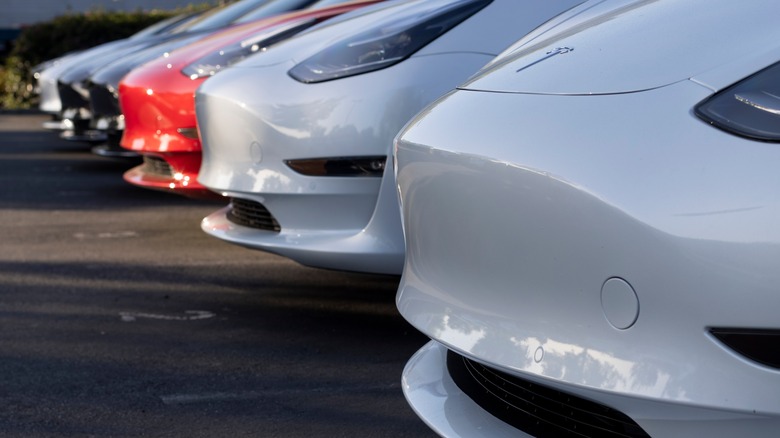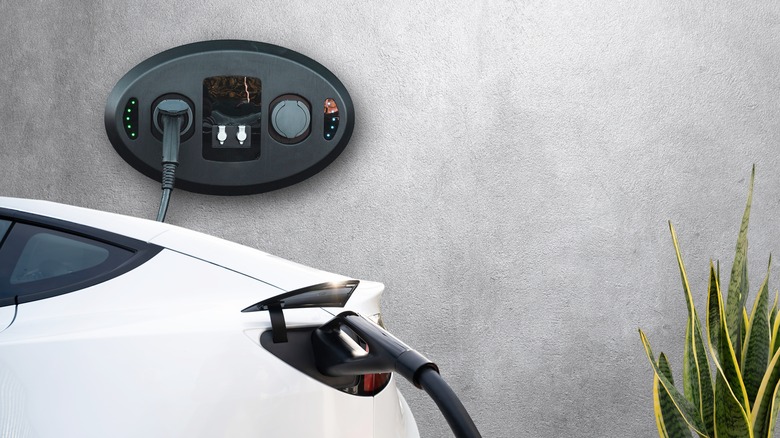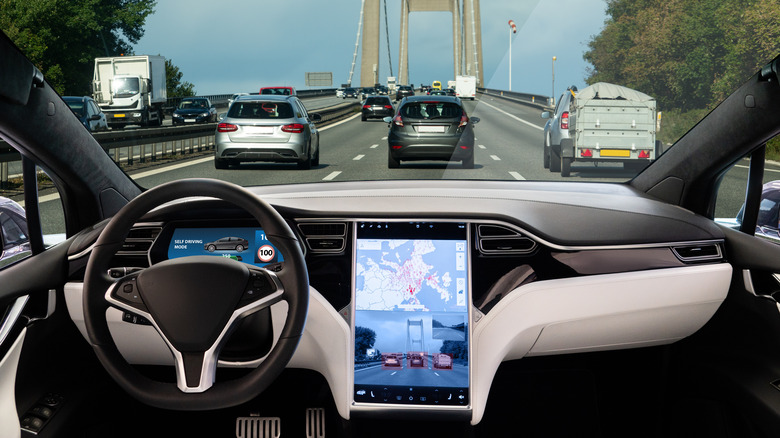Is Tesla's Long Range Option Worth It For Most Drivers?
Drivers looking to make the switch to an electric vehicle are often faced with a dizzying number of decisions. Many auto manufacturers have joined the EV marketplace in recent years, and so choice among competitive outlets has increased dramatically over what it once was. In the same way that you might have considered a Hyundai, Toyota, or Honda sedan for a new traditional internal combustion model 10 years ago, the same is true today for EV options. The leader in EV technology and style has been, of course, Tesla. Tesla has been innovating in the EV space for just about as long as Americans have been purchasing them (via Business Insider).
But even when it comes to Tesla's offerings, a consumer might feel a little lost when thinking about which option works the best for their commute and overall needs. One major consideration that consumers take on is whether they need a Long Range trim or the Standard Range trim for their Tesla. This can be a tough decision — primarily because it can feel like if you choose wrong, you've either overpaid for something you'll never use, or minimized your budget in the short term and will feel the daily effects over the lifetime of your ownership.
The truth is there's less than 100 miles of range between the standard and long range option across the 2022 offerings from Tesla (272 miles for the Standard trim, and 358 miles for the Long Range trim, according to Car and Driver).
Most drivers will never require the full, nonstop distance
To start, it's important to note that most drivers will never get in the car and drive for five or six hours without stopping. This is roughly the amount of time it would take you to travel 300 miles by car. Similarly, if you are engaging in a long road trip with a standard vehicle, you'll need to fill up the tank before embarking. Forgetting to do this will warrant a stop somewhere along the way. Conversely, EV drivers tend to plug their vehicles in every night, so departing for a long drive with a full charge isn't something you have to actively facilitate.
Because of the niche requirement of this lengthy drive time, most car buyers don't strictly need a long range model to facilitate their daily driving habits. Zippia reports that the typical driver travels roughly 40 miles round trip to and from work every day. The 272 miles offered by Tesla's standard model will be more than enough range to accommodate many days of typical commuter usage without the need for a charge.
By this logic, the increased price tag that retails for roughly $10,000 more than the standard model (per Car and Driver) isn't something that most drivers will gain substantially from. Of course, it's crucially important to think about your own needs before investing in any type of vehicle — the only person who can tell you what you need in a car is you.
The long range option provides additional juice for rough terrain or standstill traffic
Alternatively, the Long Range trim does provide additional power that can help you defeat unforeseen problems when it comes to traffic, or known power requirements in terms of road grade in your area. These ranges are based on typical road conditions, but no two roads are the same, and so no two drivers will see what might objectively be called an "average" commute. Some drivers live in mountain communities and will be traversing up and down steep slopes on a daily basis. With roads that cut through mountain passes, there may be a need for additional power from the battery in order to ensure that the car always provides crucial traction and speed (an issue noted by Torque News). Similarly, extremely cold climates may benefit from the increased output (via Electrek).
The long range option might also be worth it if you sit in a long line of traffic on a regular basis. In cities across the country, there is a dire requirement to run the air conditioning or heat the car while you are in transit. Idling in traffic or sitting at a standstill will drain your battery, too. A Long Range Tesla model can help elongate the time between charges, saving you on electricity costs while ensuring that your car never fails in the midst of a rush hour stoppage.


